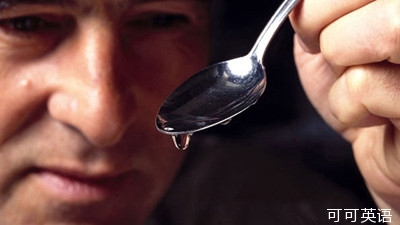科學(xué)技術(shù)
Marine biology
海洋生物
Flea market
跳蚤市場(chǎng)
A newly discovered virus may be the most abundant organism on the planet
一種新發(fā)現(xiàn)的病毒可能是地球上最豐富的物種。
WHAT is the commonest living thing on Earth?
地球上最常見(jiàn)的生物是什么?
Until now, those in the know would probably have answered Pelagibacter ubique, the most successful member of a group of bacteria, called SAR11, that jointly constitute about a third of the single-celled organisms in the ocean.
直到現(xiàn)在,那些很專業(yè)的人可能會(huì)說(shuō)是遍在遠(yuǎn)洋桿菌—細(xì)菌群中最成功的細(xì)菌,稱為大洋微小細(xì)菌,占了海洋單細(xì)胞有機(jī)體的三分之一。
 But this is not P. ubique's only claim to fame, for unlike almost every other known cellular creature, it and its relatives have seemed to be untroubled by viruses.
But this is not P. ubique's only claim to fame, for unlike almost every other known cellular creature, it and its relatives have seemed to be untroubled by viruses.
但是,這不是它成名的原因,因?yàn)樗退挠H戚不像其它大部分已知的細(xì)胞生物,它們似乎是些不會(huì)給你造成麻煩的一族。
As Jonathan Swift put it in a much-misquoted poem, So, naturalists observe, a flea/Hath smaller fleas that on him prey.
就像喬納森-斯威福特的一首詩(shī)表達(dá)的一樣—雖然這里引用很不貼切,所以,博物學(xué)家們觀察,正在捕食的跳蚤/小跳蚤們。
Parasites, in other words, are everywhere.
換句話說(shuō),寄生蟲無(wú)所不在。
They are also, usually, more abundant than their hosts.
通常,它們的數(shù)量也遠(yuǎn)遠(yuǎn)多于它們的寄主。
An astute observer might therefore have suspected that the actual most-common species on Earth would be a flea that parasitised P. ubique, rather than the bacterium itself.
精明的觀察者可能因此會(huì)猜測(cè),地球上真正最常見(jiàn)的特種是一種跳蚤—寄生的遍生遠(yuǎn)洋桿菌,而不是細(xì)菌本身。
The absence of such fleas has puzzled virologists since 1990, when the SAR11 group was identified.
自從1990年研究SAR11組群以來(lái),病毒學(xué)家對(duì)沒(méi)有發(fā)現(xiàn)這種跳蚤—即以所謂攻擊細(xì)菌的噬菌體的形式存在—而感到很困惑。
Some thought the advantage this absence conferred explained the group's abundance. But no.
一些人認(rèn)為沒(méi)有發(fā)現(xiàn)這種組群的好處解釋了它們之所以大量存在的原因。但是,事實(shí)不是這樣的。
As they report in this week's Nature, Stephen Giovannoni of Oregon State University and his colleagues have discovered the elusive phages.
正如本周自然雜志上刊登的一樣,俄勒岡州立大學(xué)的斯蒂芬尼-喬凡諾尼和他的同事們發(fā)現(xiàn)了這種難以發(fā)現(xiàn)的噬菌體。
Swift's wisdom, it seems, still holds good.
看起來(lái),斯威福特的智慧仍舊閃閃發(fā)光。
Tracking down a particular virus in the ocean makes finding a needle in a haystack look a trivial task.
與在海洋中跟蹤一種特定的細(xì)菌相比,大海撈針簡(jiǎn)直是小菜一碟了。
A litre of seawater has billions of viruses in it.
一公升的海水中有數(shù)十億的細(xì)菌。
Modern genetic techniques can obtain DNA sequences from these viruses, but that cannot tie a particular virus to a particular host.
現(xiàn)代基因技術(shù)可以獵取這些細(xì)菌的DAN序列,但是卻不能把一種特定的細(xì)菌固定在一個(gè)特定的寄主身上。
To do so, Dr Giovannoni borrowed a technique from homeopathy: he diluted some seawater to such an extent that, statistically speaking, he expected a 100-microlitre-sized aliquot to contain only one or two viruses.
為了實(shí)現(xiàn)這個(gè)目標(biāo),喬凡諾尼博士借用了順勢(shì)醫(yī)療論的一項(xiàng)技術(shù):他把一些海水的濃度稀釋到,從統(tǒng)計(jì)學(xué)角度上講,即稀釋后的100微升海水中只含有一種或兩種病毒。
The difference between his approach and a homeopath's was that what homeopathy dilutes almost to nothing are chemicals, and thus cannot breed. A virus can, given a suitable host.
他的方法和順勢(shì)療法的區(qū)別是,后者將藥液稀釋后幾乎沒(méi)有什么合成物了,因此也無(wú)法培育繁殖。而提供一個(gè)合適的寄主的話,病菌就可以繼續(xù)繁殖。
So he mixed each of several hundred aliquots into tubes of water containing P. ubique.
因此,他把稀釋后的海水分成幾百份,再把每一份混合到含有遍在海洋桿菌的水里。
Then he waited.
然后他就等待著。
After 60 hours, he looked to see what had happened.
六十小時(shí)后,他看到了結(jié)果。
In most cases the bacteria had thrived.
在大部分試驗(yàn)品中,病菌都繁殖得很好。
In a few, though, they had been killed by what looked like viral infection.
但是,在少數(shù)的試驗(yàn)品中,病菌似乎由于某種病毒感染而消失了。
It was these samples that he ran through the DNA-sequencing machine, in the knowledge that the only viral DNA present would be from whatever it was had killed the bacteria.
這些少數(shù)試驗(yàn)品就是他用DNA測(cè)序儀檢測(cè),想知道僅有的病毒DNA,無(wú)論是不是它殺了病菌,為什么會(huì)出現(xiàn)的原因。
His reward was to find not one, but four viruses that parasitise P. ubique.
他最終發(fā)現(xiàn)了不只一種病菌,而是四種寄生的遍海洋桿菌。
He then compared their DNA with databases of DNA found in seawater from around the world, to find out how abundant each is.
后來(lái),他把發(fā)現(xiàn)病菌的DNA與世界海洋的DNA數(shù)據(jù)庫(kù)相對(duì)比,發(fā)現(xiàn):
The upshot was that a virus dubbed HTVC010P was the commonest.
四種中的每一個(gè)的存在數(shù)量都非常多。
It thus displaces its host as the likely winner of the most-common-living-thing prize.
結(jié)果是,一種稱為HTVC010P人病菌是最常見(jiàn)的。因此,它便取代了它的寄主,成為可能最常見(jiàn)的生物。
That does depend, of course, on your definition of living thing.
當(dāng)然,這不是你們所定義的那種生物。
Some biologists count viruses as organisms.
一些生物學(xué)家認(rèn)為病菌是微生物。
Some do not.
一些則不這么認(rèn)為。
The reason is that a virus relies for its growth and reproduction on the metabolic processes of the cell it infects.
原因是,病菌依靠它所感染細(xì)胞的新陳代謝來(lái)生長(zhǎng)和繁殖。
This means viruses themselves are hard to parasitise, since they do no work on which another organism can free-ride.
這就意味著病毒本身很難寄生,因?yàn)樵谄渌梢悦赓M(fèi)寄生的微生物上它們無(wú)法正常生存。
Which is why the next two lines of Swift's poem, And these have smaller fleas to bite 'em/And so proceed ad infinitum, are wrong—and why, because HTVC010P itself can have no parasites, it probably really is the commonest organism on the planet.
這也解釋了為什么斯威失特接下來(lái)的兩句這些更小的跳蚤在咬它們,因此這些進(jìn)程循環(huán)往復(fù)著是錯(cuò)誤的,也是HTVC010P為什么是地球上最常見(jiàn)的微生物,因?yàn)樗旧頉](méi)有寄生蟲。
 But this is not P. ubique's only claim to fame, for unlike almost every other known cellular creature, it and its relatives have seemed to be untroubled by viruses.
But this is not P. ubique's only claim to fame, for unlike almost every other known cellular creature, it and its relatives have seemed to be untroubled by viruses.
 But this is not P. ubique's only claim to fame, for unlike almost every other known cellular creature, it and its relatives have seemed to be untroubled by viruses.
But this is not P. ubique's only claim to fame, for unlike almost every other known cellular creature, it and its relatives have seemed to be untroubled by viruses.